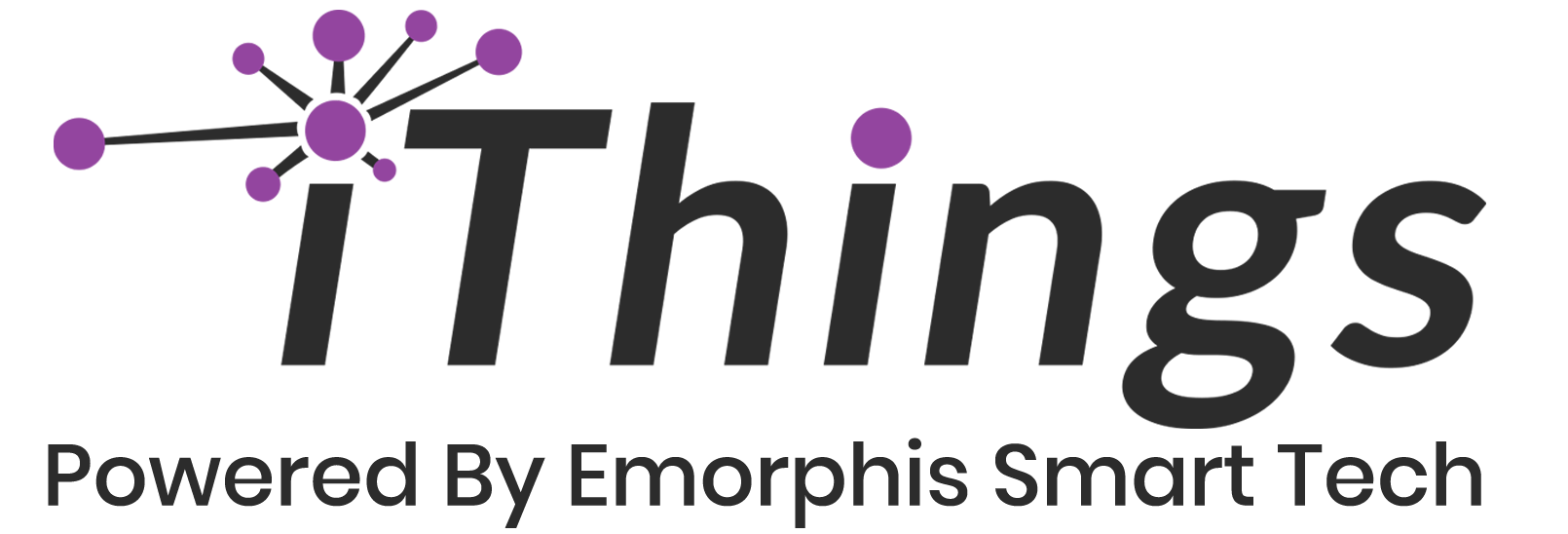
IoT application development is evolving rapidly, with connected devices expected to surpass 30 billion by 2025. As businesses increasingly rely on IoT to enhance efficiency, automate processes, and deliver seamless customer experiences, the demand for scalable, secure, and interoperable IoT applications is at an all-time high. From smart homes and healthcare monitoring to industrial automation and real-time analytics, IoT applications are transforming industries.
However, developing IoT applications isn’t as straightforward as deploying connected devices. Every IoT application must handle vast amounts of data, operate in real-time, ensure security, and integrate seamlessly across diverse systems and platforms. The complexity of IoT infrastructure and security, regulatory, and integration challenges make IoT application development one of the most intricate fields in modern tech.
So, what are the biggest challenges in IoT application development today? And more importantly, how can businesses overcome these hurdles to build reliable, secure, and efficient IoT applications?
Let’s dive in.
Major 7 Challenges in IoT Application Development
1. Privacy Concerns and Data Security
The Challenge:
IoT devices continuously collect and transmit data, including sensitive user information. Smart sensors, wearables, and industrial IoT systems generate massive datasets that flow between devices, cloud storage, and enterprise systems. Unfortunately, this creates vulnerabilities—weak encryption, unsecured APIs, and unprotected endpoints expose IoT networks to cyberattacks, unauthorized access, and data breaches.
Why It Happens:
IoT applications rely on continuous data exchange between edge devices, cloud storage, and centralized databases. Many IoT devices have limited computational power, making it difficult to implement robust encryption protocols. The lack of standardization in security frameworks further complicates the protection of IoT ecosystems.
The Solution:
- Implement end-to-end encryption for all data transactions.
- Use blockchain technology to ensure data integrity and prevent tampering.
- Adopt zero-trust security frameworks, ensuring that every request is verified before granting access.
- Regular firmware updates and security patches to prevent vulnerabilities.
2. Connectivity and Network Reliability
The Challenge:
IoT devices operate across diverse networks, including Wi-Fi, cellular, Bluetooth, LoRaWAN, and satellite connections. Poor connectivity, latency issues, and inconsistent bandwidth can severely affect real-time processing and data synchronization in IoT applications.
Why It Happens:
IoT networks depend on multiple communication protocols and infrastructure that may not always be reliable. Interference, weak signals, and network congestion can disrupt communication between devices, especially in remote or industrial settings.
The Solution:
- 5G and edge computing can provide ultra-low latency and faster data processing.
- Redundant network architecture with fallback mechanisms for uninterrupted service.
- Optimized data transmission using compression algorithms to minimize bandwidth usage.
- Decentralized processing to reduce dependency on cloud infrastructure.
3. Interoperability and Compatibility Issues
The Challenge:
IoT ecosystems consist of devices from different manufacturers, each using its own proprietary communication protocol. This creates compatibility issues, making it difficult for IoT applications to integrate with existing hardware and software.
Why It Happens:
Unlike traditional software applications, IoT solutions must interact with a diverse range of devices, sensors, and data processing platforms. Fragmented standards and vendor-specific APIs lead to integration challenges.
The Solution:
- Adopt open standards such as MQTT, CoAP, and OPC-UA for seamless communication.
- Use middleware platforms that bridge communication gaps between different IoT devices.
- Develop APIs and SDKs that allow easy third-party integrations.
4. Scalability and Reliability of IoT Systems
The Challenge:
As businesses expand, their IoT applications must scale accordingly. Handling millions of devices and petabytes of data requires a robust infrastructure that can process, analyze, and store data efficiently without causing system failures.
Why It Happens:
Many IoT applications are initially developed for small-scale deployments. As they grow, increased data flow, device load, and processing requirements can cause latency, downtime, and failure of cloud services.
The Solution:
- Cloud-native architecture with microservices to allow easy scaling.
- Edge computing to distribute processing and reduce server load.
- Load balancing and auto-scaling mechanisms to manage high device traffic.
5. Regulatory Compliance and Data Governance
The Challenge:
IoT applications that handle sensitive data must comply with regulations like GDPR, HIPAA, and CCPA. Failure to adhere to compliance requirements can result in legal repercussions and reputational damage.
Why It Happens:
IoT applications operate across multiple jurisdictions, each with different privacy and security regulations. Ensuring data sovereignty and proper governance frameworks is challenging.
The Solution:
- Data encryption and anonymization to protect personal data.
- Comprehensive compliance strategies that align with global regulatory frameworks.
- Real-time monitoring and auditing of IoT systems to ensure adherence to policies.
6. Real-Time Processing and Latency Issues
The Challenge:
IoT applications often require real-time data processing to enable immediate decision-making. For example, in autonomous vehicles, industrial automation, and healthcare monitoring, even a millisecond delay can lead to critical failures. Traditional cloud computing models introduce latency due to data transmission over long distances, impacting the performance of time-sensitive IoT applications.
Why It Happens:
IoT networks generate vast amounts of data, and sending all of it to centralized cloud servers for processing creates congestion and slows down response times. Additionally, network fluctuations and bandwidth limitations can further degrade real-time performance.
The Solution:
- Adopt edge computing to process data closer to the source, reducing latency.
- Use AI-driven analytics to filter and prioritize data before sending it to cloud servers.
- Optimize communication protocols to enable faster data transmission across networks.
- Implement hybrid cloud-edge architectures for distributed computing and faster response times.
7. Complexity in IoT Application Integration
The Challenge:
Integrating IoT applications with existing enterprise systems, cloud platforms, and legacy infrastructure is a significant challenge. Many organizations operate with fragmented IT ecosystems, leading to inefficiencies when IoT solutions need to work alongside ERP, CRM, or data management systems.
Why It Happens:
IoT devices operate on different protocols, data formats, and APIs, making it difficult to create a unified system. Lack of standardization across IoT manufacturers also results in compatibility issues, requiring custom integration efforts that are expensive and time-consuming.
The Solution:
- Use API-driven architectures to facilitate seamless data exchange between IoT applications and enterprise software.
- Implement middleware solutions that act as a bridge between different IoT devices and systems.
- Standardize data formats across devices using industry protocols like MQTT, CoAP, and OPC-UA.
- Invest in cloud-based IoT platforms that offer pre-built integrations with business applications.
Benefits of IoT Application Development
Despite these challenges, IoT application development offers immense benefits across various industries. Businesses investing in IoT solutions can expect:
1. Enhanced Operational Efficiency
Automating processes through IoT applications reduces human intervention, minimizes errors, and optimizes resource utilization. In industries like manufacturing and logistics, IoT-powered automation significantly improves productivity.
2. Real-Time Decision Making
IoT applications enable instant data analysis and actionable insights, allowing businesses to respond proactively to changes in demand, system failures, or security threats.
3. Cost Reduction
Predictive maintenance powered by IoT prevents equipment breakdowns, reducing maintenance costs and avoiding unplanned downtime.
4. Improved Customer Experience
Smart applications personalize user interactions, leading to better engagement and satisfaction. From connected homes to healthcare monitoring, IoT delivers more responsive and adaptive services.
5. Greater Security and Safety
IoT-powered security systems monitor real-time threats, track asset movements, and enforce automated security protocols to safeguard businesses and individuals.
Conclusion
The future of IoT application development in 2025 is filled with opportunities and complexities. As data-driven ecosystems expand, businesses must address security, scalability, connectivity, and compliance challenges to build robust and efficient IoT applications.
By leveraging AI, blockchain, edge computing, and standardization efforts, companies can overcome these challenges and unlock IoT’s full potential. The key to success lies in creating flexible, secure, and interoperable applications that can scale seamlessly with business growth.
Are you ready to navigate the IoT revolution? The time to build the future is now.
